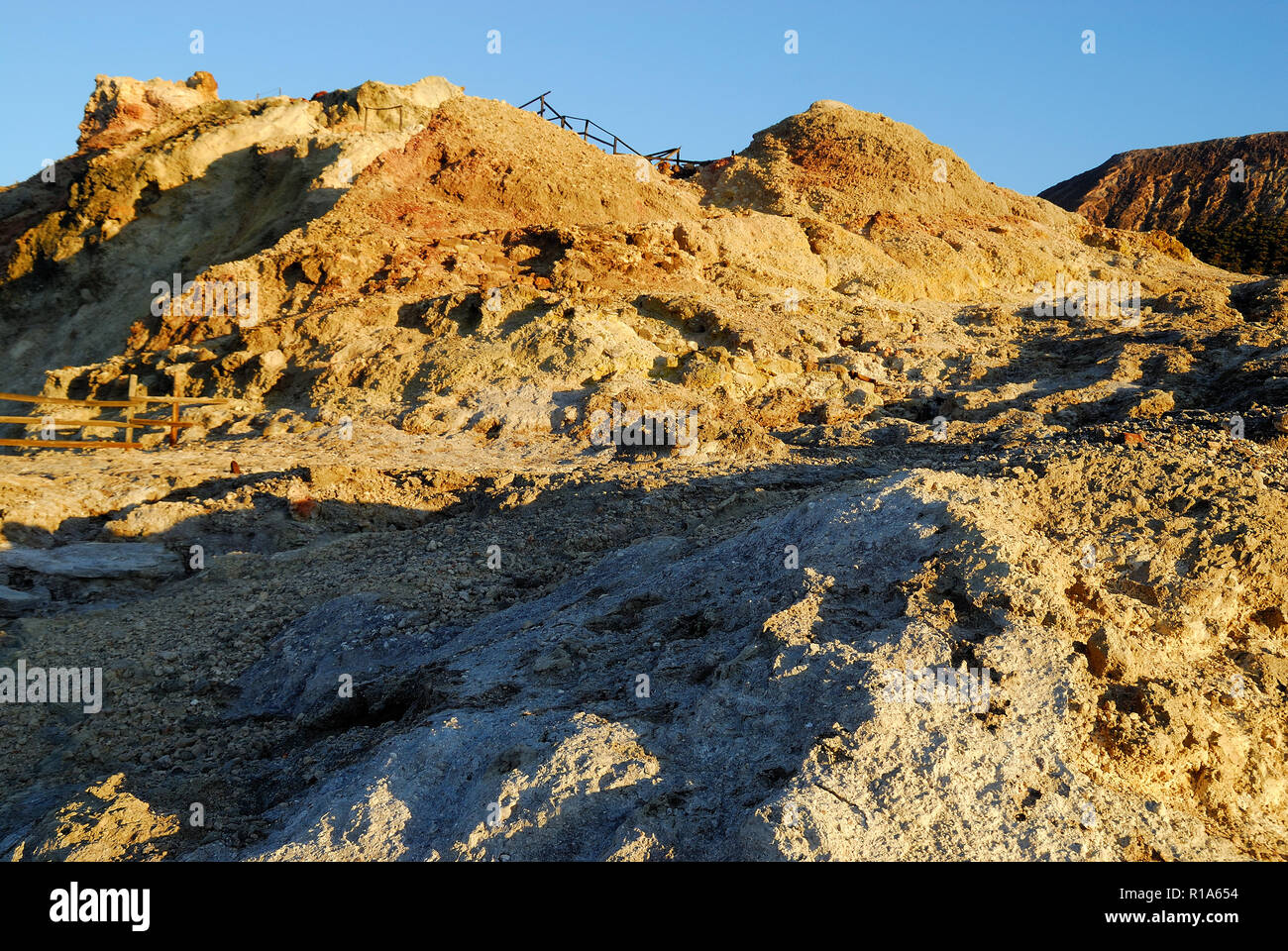Aeolian islands, Sicily, Italy. Vulcano island, the Pozza deiFanghi. The "Pozza" so commonly called is fed by innumerable bubbles from which emerge sulphurous vapors, brackish water and clay mud with very high sulfur content. the thermal spring of Vulcano is useful for three large groups of pathologies: articular affections, dermatological affections and airway affections.

Image details
Contributor:
Ferdinando Piezzi / Alamy Stock PhotoImage ID:
R1A654File size:
28.7 MB (2.9 MB Compressed download)Releases:
Model - no | Property - noDo I need a release?Dimensions:
3872 x 2592 px | 32.8 x 21.9 cm | 12.9 x 8.6 inches | 300dpiDate taken:
9 October 2018Location:
Vulcano island Aeolian Islands Sicily ItalyMore information:
This image could have imperfections as it’s either historical or reportage.
Aeolian Islands, Sicily, Italy. Island of Vulcano, it contains several volcanic caldera, including one of the four active volcanoes in Italy that are not submarine. The word "volcano" and its equivalent in several European languages derive from the name of this island, which in turn derives from Vulcan, the Roman god of fire. The Romans used the island mainly for raw materials, harvesting timber, and mining alum and sulfur. The most recently active centre is the Gran Cratere at the top of the Fossa cone, the cone having grown in the Lentia Caldera in the middle of the island, and has had at least nine major eruptions in the last 6000 years.